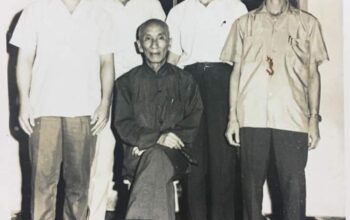Wing Chun is a traditional Chinese martial art that gained popularity worldwide due to its practicality and effectiveness in combat. Developed by a Buddhist nun named Ng Mui, Wing Chun is known for its efficient techniques, direct movements, and emphasis on close-range combat. However, the question remains: are Wing Chun techniques truly applicable in real-world situations? In this article, we will examine the practicality and effectiveness of Wing Chun techniques in real-life scenarios.
One of the primary advantages of Wing Chun is its focus on practicality. Unlike other martial arts that rely heavily on acrobatic kicks or complex techniques, Wing Chun aims to deliver simple and straightforward movements that can be utilized effectively in real-world self-defense situations. Wing Chun techniques are designed to work in close quarters, making them suitable for real-life confrontations where there is limited space to move around.
Another crucial aspect of Wing Chun is its emphasis on simultaneous attack and defense. Wing Chun practitioners are trained to defend and attack simultaneously, which allows them to neutralize their opponents quickly. This concept is particularly relevant in real-world situations where speed and efficiency are vital. By employing simultaneous attack and defense, Wing Chun practitioners can swiftly disable or incapacitate their adversaries.
Moreover, Wing Chun’s principle of centerline theory plays a significant role in its effectiveness. The centerline theory emphasizes attacking and defending along the centerline of the opponent’s body, which is the shortest and most direct route. By focusing on the centerline, Wing Chun practitioners can exploit their opponents’ vulnerabilities while minimizing their own exposure to counterattacks. This concept is highly applicable in real-world scenarios where precision and quick reactions are necessary to gain the upper hand in a confrontation.
Wing Chun’s focus on practical training methods also enhances its applicability in real-world situations. Wing Chun practitioners engage in sparring and practical drills to simulate real-life combat scenarios. This realistic training approach allows practitioners to develop their reflexes, timing, and adaptability, enabling them to respond effectively to unpredictable situations. By training in a realistic manner, Wing Chun practitioners can bridge the gap between theory and practical application, making their techniques more applicable in real-life encounters.
Furthermore, Wing Chun’s emphasis on sensitivity and tactile awareness provides practitioners with an advantage in close-range combat. Through specialized drills and training exercises, Wing Chun practitioners develop a heightened sense of touch and sensitivity to the subtle movements of their opponents. This heightened sensitivity allows them to anticipate and react to incoming attacks with precision and efficiency. In real-world self-defense situations, where split-second decisions can make a difference, the ability to detect and respond to an opponent’s movements is crucial.
However, it is important to note that no martial art is without limitations. While Wing Chun techniques can be highly effective in close-quarters combat, they may have limitations against larger and stronger opponents or in situations where weapons are involved. Additionally, the effectiveness of Wing Chun techniques also depends on the practitioner’s skill level, physical fitness, and ability to adapt to different situations.
In conclusion, Wing Chun techniques are indeed applicable in real-world situations. With their focus on practicality, simultaneous attack and defense, centerline theory, realistic training methods, and sensitivity, Wing Chun techniques provide practitioners with a solid foundation for self-defense. However, it is essential to remember that no martial art is universally effective in every situation. Mastery of Wing Chun, like any other martial art, requires dedication, continuous practice, and a deep understanding of its principles.







